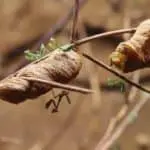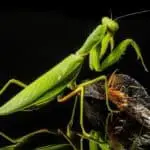There are quite a number of feeder insects for mantis that you can easily maintain by yourself. Each has different characteristics and you should use different feeders under different scenarios.
Refer to the table below for characteristics of different feeders. This should help you to choose the suitable feeders for your mantises.
| Feeders | Stages of Mantis | Pros | Cons |
| Springtails | Newborns, especially of tiny species | Easy to breed | Too small for larger mantis |
| Fruit Flies | Newborns, Nymph/Adult of smaller species | Easy to handle if you buy the flightless/ wingless strain | Too tiny to handle, especially if they can fly; Flightless variant can regain flight capability if it kept under warmer temperature |
| House flies | Nymph/Adult of smaller species | Easy to offer to the mantis in the form of pupa. | It will be a waste if all pupa turn into adults around the same time. |
| Crickets | Nymph of large species/Adult | Come in various sizes (stages) | Can be noisy & harder to hunt because they stay at the bottom. Some mantises ignore crickets. |
| Roaches | Nymph of large species/Adult | Come in various sizes (stages) | Harder body makes it harder to ingest. |
| Mealworms | Nymph of large species/Adult | Easy to handle, easy to buy | Harder to hunt because they stay at the bottom. Not as nutritious as other feeder insects |
If you need help in getting those feeders or kits to breed them, check out the resources page here.
Continue reading to learn more on how to breed the feeder insects of your choice.
Springtails as Food for Mantis
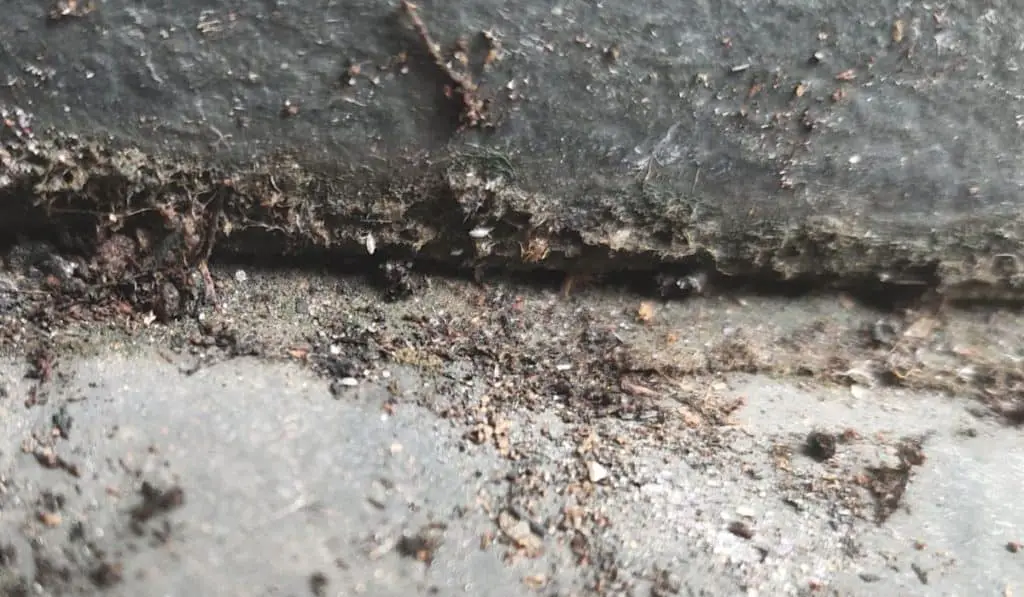
Springtails are tiny creatures that can be as small as 1 mm. They are commonly found in soil, underneath bark and compost. Due to their small size, they make perfect choices for tiny baby mantises, especially of those smaller species such as the indian flower mantis and gambian spotted-eye mantis.
You can easily collect springtails from garden soils. If you can’t find them, you can also buy them online.
There are 2 methods of rearing springtails – the charcoal method and the soil method. I recommend the charcoal method because it is easy.
How to Feed Your Baby Mantises with Springtails
Given the tiny size of springtails, you may wonder how to transfer them to your mantis enclosure. It is actually quite simple!
Put 1 unpeeled potato into the culture (above the soil) and let it stay there for 1-2 hours. There should be a number of springtails climbing on the potato after that. Collect the potato and place it into a deli container. Shake or brush off the springtails into the deli container. Then, you can pour the springtails into the baby mantis enclosure.
Fruit Flies as Food for Mantis
Fruit flies are a group of small flies sometimes known as the vinegar flies or fruit flies. There are 2 species commonly used as feeders: the smaller D. melanogaster (~1.5 mm) and the bigger D. hydei (~3 mm). While they can fly, there are commercially available flightless and wingless strains that make feeding your mantis easier.
Getting Fruit Flies
You can get fruit flies from reptile pet stores. If possible, choose either flightless or wingless fruit flies. The difference between the 2 is, wingless fruit flies don’t have wings and hence can’t fly; meanwhile, flightless fruit flies have wings, but they can’t fly. Note that flightless fruit flies can regain their flight capability if the temperature gets too warm.
Alternatively, you can collect your own fruit flies. Fruit flies can be easily attracted and collected using fruits. If you buy some banana or jackfruit and leave it there for a few days, most likely you will see some fruit flies flying around the fruits.
You can construct a simple trap using a plastic bag. Simply put the fruits into the plastic bag, and tie the plastic bag loosely from the middle using a rubber band. This creates a narrow path for the flies to enter the trap while reducing the chance of them escaping.
After you have enough fruit flies, wrap the opening of the plastic bag around the opening of a transparent container and move the rubber band towards the container so that it ties the plastic bag to the container without leaving any gaps.
Hold the container above the plastic bag and disturb the plastic bag so that the flies move upwards into the container. You now have the fruit flies in a clean container.
Breeding Fruit Flies
To breed fruit flies you need to prepare them food. There are a lot of fruit fly media recipes available and here is one of the easiest:
Ingredients:
12 oz/ 350 mL beer
0.5 oz/ 15 mL vinegar
1 oz/ 30 g potato flakes
2 oz/ 60 g corn flour
0.1 oz/ 3 g Brewer’s yeast
Mix the ingredients evenly until it forms a smooth mixture like mash potato. Add boiled water if needed when it gets too dry. When it is done, fill 1″ depth of the mixture in a container (you can use a disposable plastic cup with lid) and keep the rest in the fridge for future use.
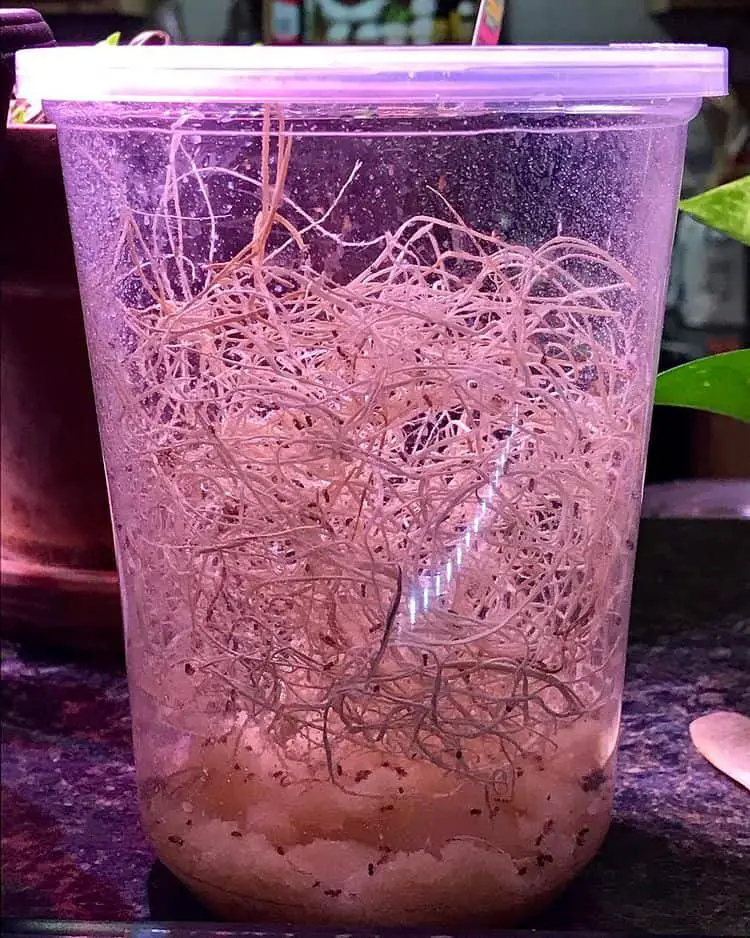
Stuff a handful of wood fiber or cardboard folded zigzag into the breeding container, touching the food medium. This provides additional surface for the fruit flies to breed and pupate. Then, carefully transfer the fruit flies into the breeding container and cover the culture with a lid. Make a few tiny holes using needles on the lid for ventilation.
Keep the container somewhere warm, around 75-79 °F (24-26 °C). You should have your first fruit flies population boom in 2 weeks time. If you have too many maggots, you can keep them in a chiller (as low as 59 °F or 15 °C) to slow down their growth.
To continue breeding them after the first population boom, transfer some fruit flies into a new container set up in the same manner. The old container should be disposed of once all fruit flies are used up/removed or gets moldy.
How to Feed Your Mantis with Fruit Flies
If you have flightless or wingless fruit flies, feeding your mantis is straightforward. Simply use a soft paint brush to transfer the fruit flies to your mantis enclosure. But what if your fruit flies can fly?
In such a case, put the fruit flies into a chiller at 40 °F (4 °C) for 1-2 minutes. The fruit flies will become inactive and it can take 1-2 minutes for them to recover. You can now safely open the lid and transfer the fruit flies using a paint brush. In fact, you can use this method whenever you want to transfer your fruit flies from 1 container to another.
House Fly as Food for Mantis
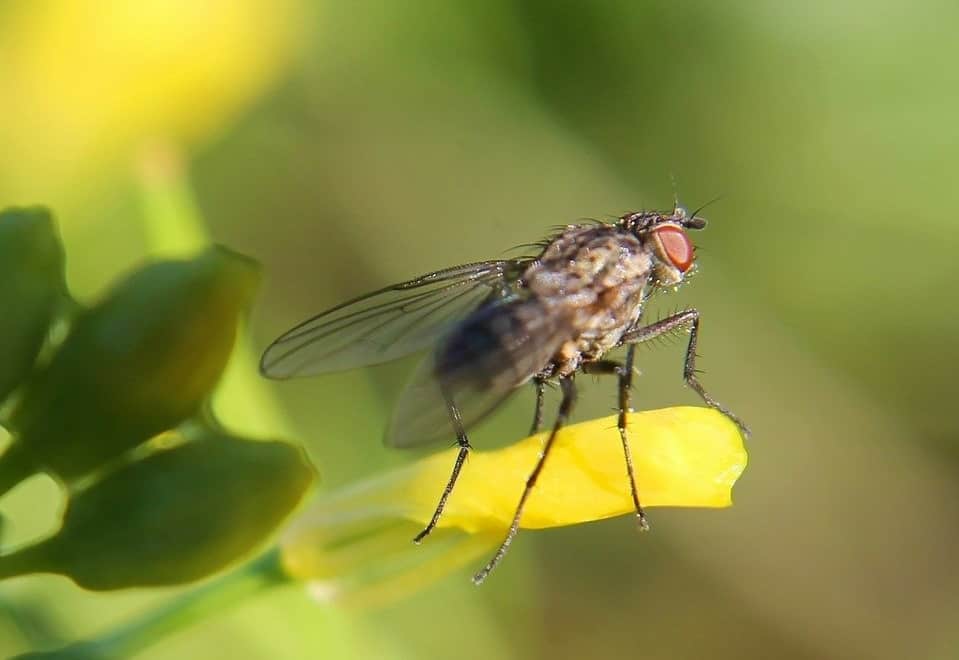
House flies are yet another common feeder for mantis. Due to their size, they are suitable for bigger nymphs, or even adults of smaller species. Because of their filthy behaviors where they love feces, I would recommend you to buy captive-bred flies in the form of pupae, rather than catching them by yourself.
How to Breed House Flies
Put the pupae in a mesh cage and wait for them to emerge. Prepare a small tray filled with either milk or soy powder and a tube with 10% syrup water. Stuff cotton into the syrup so that the flies can drink it through the cotton.
A few days after you have seen some flies mating, prepare the breeding medium. Take a dish and pour in some milk. Put cotton in the dish so that it fully absorbs all the milk. Put this dish into the mesh cage for 2 days and collect the eggs laid on the cotton. Repeat the same process to get more eggs if required, using a new milk/cotton setup.
After you have collected the eggs, prepare a jar filled with 1″ depth of cotton that has absorbed milk fully. Let it sit for an hour and pour away excess milk. Then, carefully transfer the eggs into this jar such that the eggs are on the cotton or wall of the jar. Cover the jar with a cotton mesh tied securely using a rubber band.
The maggots need a drier environment to pupate. After you have a few maggots, put in a handful of wood fiber, crumbled paper or cardboard folded zigzag into the jar. The maggots will crawl onto the paper for pupation.
Take out the wood fiber/paper every day or 2 so that you can collect the pupae. If you have too many pupae at one time, you can delay their emergence by placing them in a chiller at 59 °F or 15 °C.
Eventually, the growth of molds will make the jar unsuitable for your maggots. Hence, you need to prepare a new breeding jar with new eggs every 2-3 weeks.
The house flies should be kept at around 77-86 °F (25-30 °C). Make sure the enclosure is well ventilated.
Feeding Mantises with House Flies
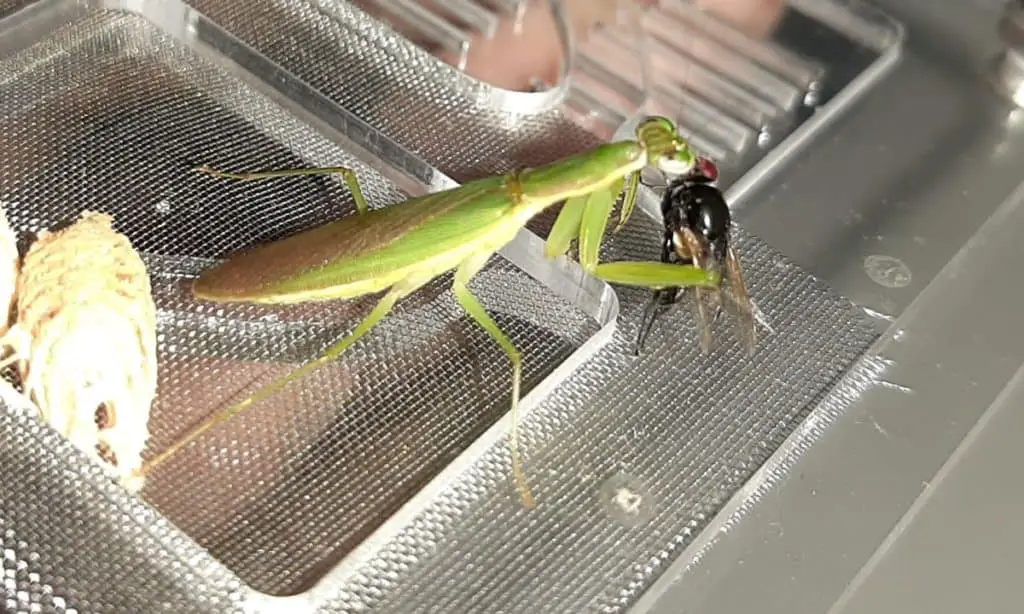
You can easily feed your mantis using house fly pupae. Simply drop the pupae into the mantis enclosure, onto somewhere dry. Once the house fly emerges, it becomes the target of your mantis. You can put a few pupae at the same time since they emerge at different times.
It takes the house fly a week or so to emerge from the pupa. While waiting for them to emerge, you should offer your mantis adult flies.
You can “deactivate” the adult house flies by putting them into the chiller at 40 °F or 4 °C for 5-10 minutes. Then, transfer the adult flies into your mantis housing using a tweezer.
Crickets as Food for Mantis
Crickets are one of the most common feeders that you can easily find in many pet stores. They are cheap and can come in different sizes (due to their age) in a single purchase.
How to Breed Crickets
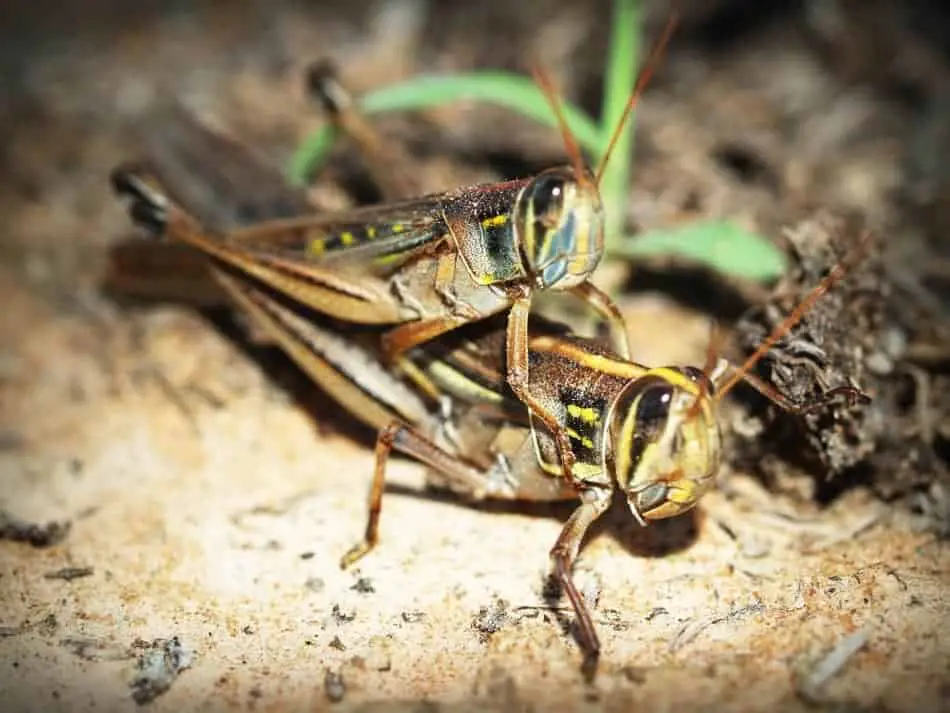
While crickets are cheap, breeding them is a good choice as it saves you additional trips to a pet store and saves you some money in the long run.
Simply put the crickets into a well ventilated housing. The flooring should be laid with a paper towel to facilitate cleaning. Offer them cut fruits/vegetables, bread and/or cricket food. Replace the food after 2-3 days, or as soon as depleted. You can put the food in a sauce plate so that it’s easier to clean up.
Crickets obtain enough water from the fruits or vegetables. If you’re feeding dry food only, you need to give them water supply. To do that, put a wet sponge on a sauce plate so that the crickets have something to drink. Without the sponge, the crickets may drown in the water.
Once you have a few adult female crickets and at least 1 adult male cricket, put a cup filled with moist soil in the cricket housing. The female cricket will lay eggs in the soil.
But how do you know if the cricket is an adult, male or female? It’s simple. Adult crickets have wings but the nymphs don’t. Female crickets (either adult or older nymphs only) have an ovipositor at the tip of her abdomen. It looks like a stick, protruding from the abdomen. Meanwhile, male crickets don’t have the stick-like structure at the tip of their abdomen.
Remove the cup after 2-3 days and place it in another enclosure to avoid the older crickets from cannibalizing the young crickets that are emerging.
Make sure the cricket housing is adequately moist by misting it every few days. Keep the crickets at 68 – 95 °F (20 – 35 °C), in the dark.
Maintain the hygiene of your crickets by cleaning the enclosure every week or 2. Carcasses and droppings should be cleaned off to prevent molds and diseases.
How to Feed Your Mantis with Crickets
Crickets often stay at the bottom of the housing while mantises prefer to hunt on top. Hence, it may take a longer time for the mantis to notice and catch his prey.
If your mantis has trouble hunting the cricket, you can hand-feed your mantis. To do that, decapitate the cricket and squeeze out some tissues from its body. Hold it in front of your mantis using a tweezer or pin, with the wound facing the mouthparts of your mantis. If you have smaller mantises, you can cut the cricket into pieces and hand feed your mantis. Many mantises accept freshly killed insects, while some insist on eating only what they hunt.
Do not leave the cricket overnight with mantis if they have similar size. Crickets are omnivores and may kill your mantis if your mantis is weak!
Dubia Roaches as Food for Mantis
Similar to crickets, dubia roaches are common feeders that you can find in many pet stores. Being docile and easy to be handled, dubia roaches make a suitable choice for bigger mantises. Maintaining a dubia roach colony gives you roaches of different sizes which cater the need of your mantis at different stages.
How to Breed Dubia Roaches
Roaches are hardy insects that you can breed easily. Prepare a solid container to house the roaches. Lay the flooring with old newspapers, dry hays or sawdust. Apply a layer of Vaseline on the inner upper wall of the container so that they don’t escape when you open the lid.
Roaches love to hide in narrow places. Fill the container with some egg cartons stacked on each other. You can also use corrugated cardboard paper folded zigzag. This will serve as their hiding place.
You can feed your roaches with almost everything. For the sake of your mantis, I would suggest you to use clean food though. You can offer them dog biscuits, fruits, breads etc. Make sure foods are always available. Unconsumed food should be replaced at least twice a week to prevent growth of molds.
To keep them hydrated, prepare a tray of water and put a sponge into the tray. This allows the roaches to drink the water through the sponge without drowning.
Keep the temperature at around 77 – 95 °F (25 – 35 °C). Roaches love dark and dry places so keep them in a dark, undisturbed place. Once every 4 – 6 month, clean the housing and replace the egg cartons/cardboard papers and the substrates.
Note that it takes around half a year for the dubia roaches to grow into adults. Make sure you have enough roaches to feed your mantis while waiting for them to breed.
How to Feed Your Mantis with Dubia Roaches
Feed your mantis with dubia roaches like how you feed it with crickets. The main difference in using roaches is that the roaches have a harder exoskeleton. Smaller mantises may need your help to hand-feed them. Just cut off the head of the roach, squeeze some tissues out and point it to your mantis.
Mealworms as Food for Mantis
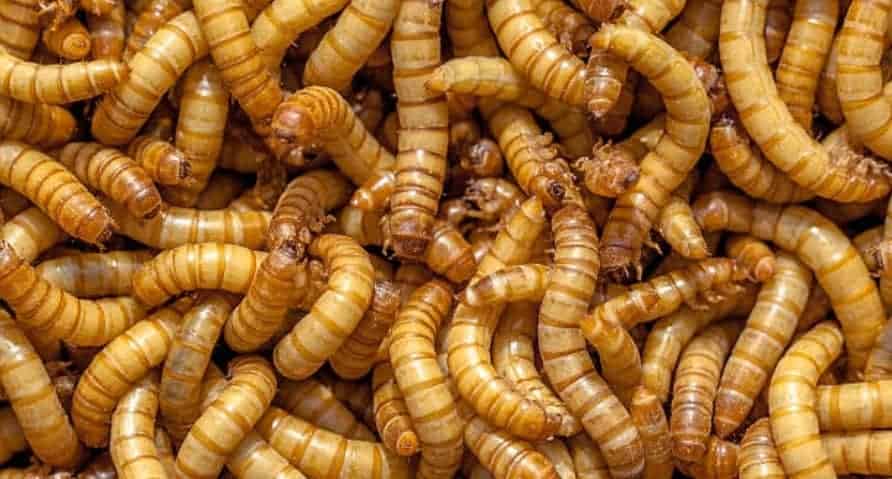
Mealworm is probably the most popular feeder insect, not only for predatory insects or reptiles, but also for fish. They are actually larvae of darkling beetles, and can grow up to 1″ (2.5 cm).
Mealworms are very easy to handle; they don’t run and fly. However, they offer lesser nutritions compared with the likes of flies and roaches. Hence, it is a good idea to alternate between mealworms and other insects.
I would recommend using mealworms as back up when other feeders are not available because you can easily get them from aquatic pet shops.
How to Breed Mealworms
To breed mealworms, make sure you buy those that can grow into adults. Some breeders use juvenile hormones to prevent the mealworms from becoming adults. Those mealworms are larger than their normal counterparts because they continue to grow in the form of larvae instead of turning into adult beetles. As a result of that, you can’t breed those mealworms.
House the mealworms in a big container with a lid. Punch a few holes for ventilation. Put some bread and cereals into the container to serve as food for the mealworms. Then, add some cut potatoes and cabbage by putting them onto a plate so that it’s easier to clean up. Replace the potatoes and cabbage once a week and top up the bread and cereal if required.
Keep the temperature at around 72-82 °F (22-28 °C). Mealworms prefer a drier environment so you don’t need to mist them. They will get enough water from the food.
As they grow into adult beetles, the beetles mate and lay a few hundred of eggs each. When you see tiny larvae crawling around, you can start to either transfer the adult beetles into a new container to avoid cannibalism, or kill the adult beetles if you think the population is sufficient to support your mantis. Note that mantis rarely feed on adult beetles.
It can take 3 months or more for the mealworms to reach adulthood and breed. Hence, plan your mantis feeding regime carefully.
How to Feed Your Mantis with Mealworms
Mealworms are slow and quiet. Try to put the mealworm somewhere near the mantis so that your mantis notice it. Alternatively, hand-feed your mantis.
Recommended Supplies
Here are my recommended supplies of feeder insects. Note that I get a small commission when you buy the items through the links in this page. This helps me to maintain the site without incurring additional costs to you.
Last Words
There are various feeder insects that you can choose other than those listed here. Always select the feeder insects of suitable size for your mantis. Certain mantises have specific preferences and you should give them what they eat.
You can also learn more about keeping mantis from my recommended books.

